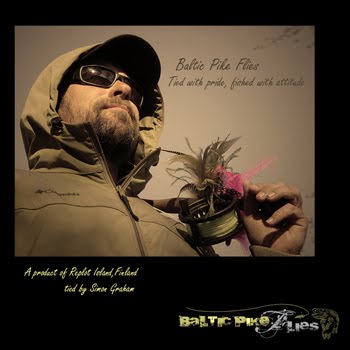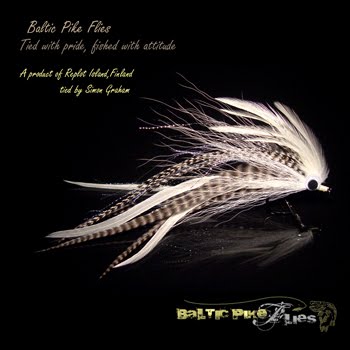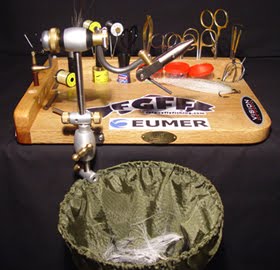Just thought I would show you the differences in colour between Pike caught from a lake here in Kuru and one from the
I’m left wondering though, with darker water comes less visibility and with less visibility there isn’t much need for camouflage. Would this make pike more active in these conditions than they generally would need to be? Or would they still spend most of their time waiting in ambush areas for their intended quarry to come along.
One can see here that this Pike has all the traditional trademark patterns you’d expect from a clear water dwelling species as the Baltic pike. Its need to blend into its surroundings seems far more apparent than its darker cousin, thus provoking the question again in reverse. With clearer water and much better visibility, would this make pike less active and more prone to ambush tactics? Or would they still be as active knowing they would be more easily spotted by their intended prey?































9 comments:
Wow! Very nice fish. I love the blog. Keep up the great work!
Love your crocs :-)
how do they achieve this camouflage or is it a result of the vegetation they've been eating? is that top one a male with its reddish underparts?
Hi Henry,
Generally Pike are ambush hunters and their need to blend it to their surroundings seems more apparent in clearer water than their dark water counterparts.It would be interesting to see whether these darker species would be able to adapt to clearer water conditions. Would they slowly loose their darker colourations for a more lighter mottled look?,and if so how long would this process take?
Ive also noticed this in the Perch here in Kuru as well.Most are quite dark and lack the usual flank stripes and colouration they usually have.Whether this is a defence mechanism against larger predators like Pike or whether they have adapted this form to help them blend into their surroundings which would allow them be more efficient hunters I don't know and needs more reading up on.In regards to your question on Gender, I often find it hard to distinguish whether the pike I catch are either Male or female as they dont have specific different marking but I can say that generally male pike never exceed more that 3kg whereas all female pike generally grow to much larger sizes anywhere from 10kg to 20kg and sometimes higher.
Thanks for provoking the question mate
Simon... interesting subject. If you take Sea Bass as an example of another species, those caught in deep water are usually darker than those caught in shallower water with a sandy substrait. My experience of pike falls into river and stillwater... all of the pike have "traditional" markings... even the ones from the 6 acre carp water which has limited visability. I wonder whether the ones at Kuru are affected by whatever leaches out of the bog and perhaps this linked with time as to whether this is now a genetic trait where the pale pike couldn't survive as they were easy prey to the dark ones... and would they indeed go pale in another environment..? You could always catch a smaller one and keep him in your bath (assuming it is a white bath) for a month and see what happens :) !!
Found an Interesting script last night David of fish colouration.
Pigment is mostly contained in cells called chromatophores. Most fishes can contract and expand their Chromatophores to change colors.
Reflective cells called Iridocytes can change color rapidly because the different wavelengths of light are absorbed at various depths, fishes may appear a different color underwater than at the surface
Most species of fishes are counter-shaded: the dorsal (top) surface is darker than the ventral (underneath) surface. When light comes from above, the animal appears inconspicuous. The dorsal side of a counter-shaded fish blends in with the dark ocean depths or ocean bottom when viewed from above. The ventral side blends in with the lighter surface of the sea when viewed from below. A counter-shaded fish is harder for predators and prey to spot.
Some fish are colored so that they blend in with their environment. Many bottom dwelling fishes match the substrate and even change color when they move to a new location. The northern pike's (Esox lucius) colors blend in with weedy areas where it lurks in wait for prey.
This got me thinking that wouldn't it be better to tie in light colours like whites,yellows and flash onto the dorsal part of the fly and darker colours like purples,blacks etc onto the ventral side of the fly. Something maybe we could try in a few flies this winter David just to see if it improves not only the flies visibility but also improves the strike rate.
I have just read an interesting article from a 5 yr study conducted in the states on predatory fish’s movements and pigment colouration in dark & clear water lakes, and without going into the technical aspect of the findings, What transpired was that in darker lakes much of the benthic invertebrate communities, phytoplankton, macrophytes, and micro crustaceans that were reliant on light for their own survival spent more time in the mid and top structure of dark watered lakes due to improved light and water temperatures than a clearer watered lake. This resulted in many of the smaller species of fish that fed of these invertebrates to congregate and be found more in the mid to top structure of water as well. Which in turn has a knock on effect of the fish that predated on these fish ie: (Perch, Pike, Zander/Walleye). Many of these predatory fish that had been tagged for the study were to be found swimming around the mid to top structure of water most days as visibility from the bottom where most would generally congregate in clearer water conditions was none existent. They concluded as well that this was the reason for these predatory fish to be much darker in colouration as they had no need for their typical striated & spotted form used to camouflage them while lying on the bottom in ambush areas.
With this now in mind I would say that fishing at depths in darker water wouldn’t be very beneficial and that probably stripping your fly back in the mid to top structure of darker lakes would be more productive as this is where most of these predators will be found. Something I will, & maybe all Pike fly-fisherman should definitely look at next spring time when fishing on darker waters.
My view is that in a fly unless you have clear water VOLUME is the most important feature of the fly... even in murky water a pike can detect a fly dropping through the layers... I proved it this morning by leaving a warm office and 5 casts in on on mark BANG 10lb fish!! Colour - yes... BUT bags of volume for definite!!
Cheers (and just about thawing out in the office)
Brown trout seem to be the only fish we have here that show a really wide range in colouration, upland peaty waters tend to produce black trout with vivid red spots, whereas lowland waters produce stunning buttery yellow fish with a mayriad of different colours adorning their flanks.
There is a very peaty loch quite local to me , perched on a large swath of moorland. It reputedly contains no life but a bit of web research suggests otherwise. I found old accounts (165yrs to be precise) stating that perch, pike and eels wee taken here.
Im cerytain those fish would resemble the dark beasts on this page as the water is literally black!
Post a Comment